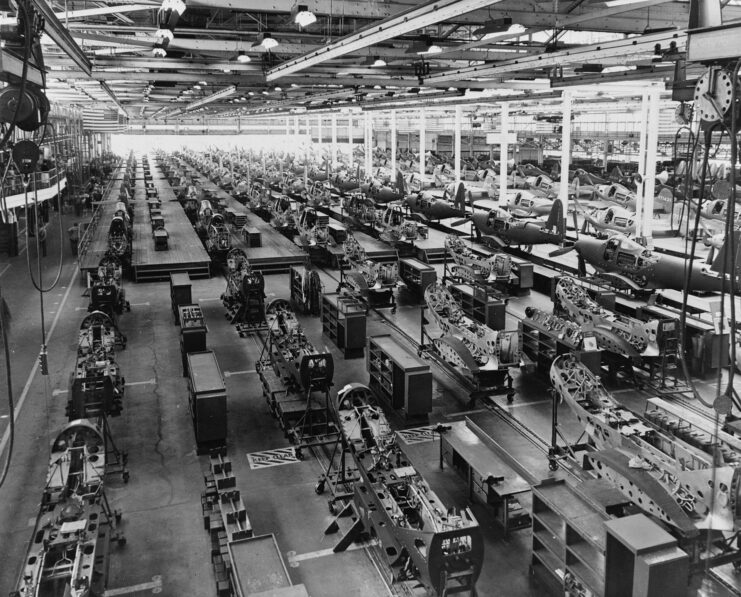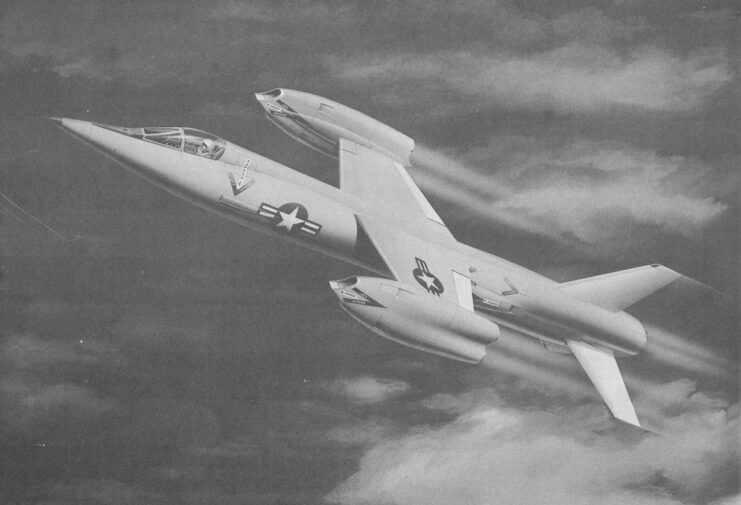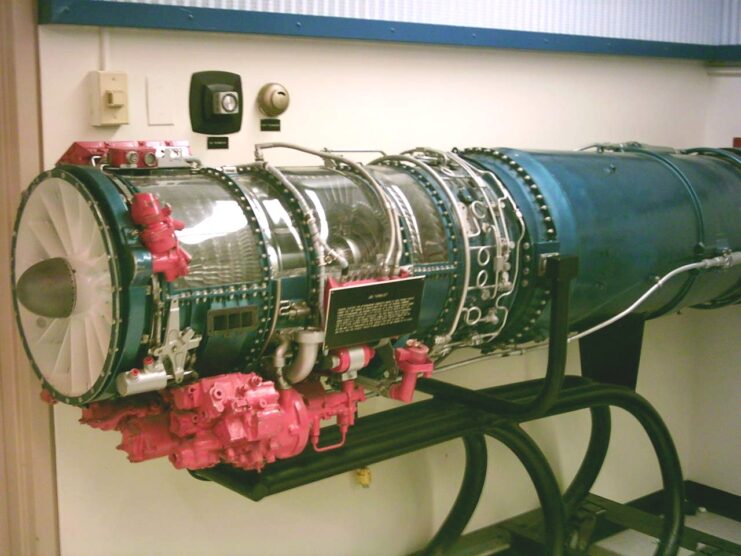Throughout the Cold War, militaries across the world were interested in bettering their arsenals in the event of an enemy attack. One particular type of technology that interested nations – particularly the United States – was VTOL aircraft that could takeoff and land vertically. This was a relatively new concept, as jet aircraft had only been around since the middle-to-final stages of the Second World War, but that didn’t stop the US Air Force and Navy from ordering the development of the Bell D-188A.
Development of the Bell D-188A

In the 1950s, the burgeoning concept of vertical take-off and landing (VTOL) technology more than intrigued military strategists. With a desire to develop a fighter aircraft that could be operated from virtually anywhere, the US Air Force and Navy approached Bell Aircraft to design one.
The project, designated the Bell D-188 and D-188A, was intended to fulfill a host of roles, including all-weather operations and defense interception. By incorporating newer VTOL capabilities, the aircraft promised to enhance operational flexibility, which would allow for rapid deployment and a reduction in airbases being vulnerable to attacks.
Bell was provided $17 million for the first phase of development, and the company worked with Convair on a joint weapon system management team to design the model designated for the Air Force. A full-scale mock-up was presented in 1960, but by this time, the Navy had canceled its own order.
Proposed specs. for the Bell D-188A

The Bell D-188A was intended to be a new generation of fighter aircraft. It would have been equipped with eight General Electric J85-GE-5 turbojet engines – four mounted on swivelling pods on the aircraft’s wingtips, two in the rear fuselage and two behind the cockpit – that would allow it to reach speeds of over Mach 2. The power plants installed on the wingtips, in particular, would allow the D-188A to land and takeoff vertically.
On top of its eight engines, the aircraft would have featured an advanced engine bleed system designed to assist in vertical lift and maneuvering.
In terms of its appearance, the D-188A would have had a sharply-pointed nosecone, which preceded a single-seat cockpit that sat at the nose of the fuselage. The plan was to equip the aircraft with two or four 20 mm cannons, as well as an internal weapons bay and eight hardpoints on its wings, allowing for the deployment of missiles and other potent ordnance.
Why was the project cancelled?

Despite its promise, the Bell D-188A faced several challenges, which ultimately led to the project’s cancellation. One of the main issues was the complexity of VTOL technology, which presented significant engineering issues. This and the aircraft’s swivelling engine pods further complicated the overall design.
On top of this, the D-188A fell victim to the US military’s shifting priorities. As aforementioned, the US Navy had already lost any interest it had by the early 1960s, and the Air Force followed soon after, spurred by increasing development costs. By 1961, it was officially cancelled.
What was the first true VTOL aircraft?

While the Bell D-188A wasn’t directly replaced by another aircraft, its cancellation allowed for the development of more practical VTOL technology. Eventually, such an aircraft became operational, in the form of the Hawker Siddeley Harrier.
More from us: The B-29 Superfortress ‘Kee Bird’ Was Frozen in Time for 47 Years – It Was Almost Rescued
Want to become a trivia master? Sign up for our War History Fact of the Day newsletter!
The Harrier, developed in the United Kingdom and later adopted by the likes of the US Marine Corps, the Indian Navy and the Royal Thai Navy, was primarily used by the Royal Air Force (RAF) and Navy during the Cold War. Units were stationed across West Germany, to defend against any possible attack or invasion by the Soviets.
